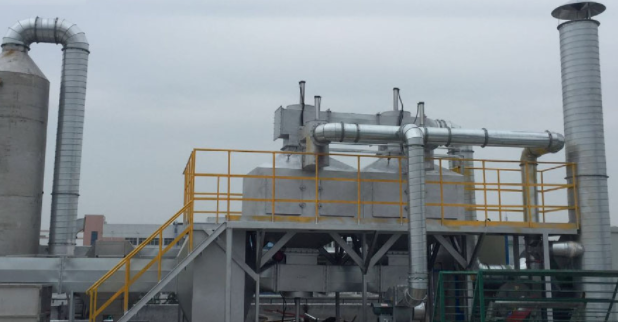Science has so much knowledge about waste gas treatment, now we return TO the essence, focus on the introduction of RTO,RCO, CO, TO these several types of VOCs incineration device we are familiar with, from the point of view of some principles, for friends who do not understand VOCs treatment facilities, as follows:
What is RTO, RCO, CO, TO?
First, R stands for heat storage, and the heat storage body is ceramic.
01RTO is high temperature regenerative incineration method
It uses natural gas or diesel fuel to raise the temperature to 760 degrees, combines with thermal storage ceramic body to maintain constant temperature, directly decomposes the waste gas from high temperature, no catalyst, suitable for 24 hours continuous operation, can deal with low, medium and high concentration of waste gas.
02RCO is a low temperature regenerative catalytic combustion process
It uses natural gas or diesel as fuel or electricity to raise the temperature to 280-400 degrees, and maintains constant temperature in combination with ceramic heat accumulator. By low temperature + catalyst to decompose and oxidize the waste gas, because to reduce the incineration temperature of the waste gas, it is necessary to use catalyst combination to make the waste gas completely decompose. Can adapt to intermittent discharge operation, can deal with low, medium, high concentration of waste gas. Generally speaking, the processing efficiency is comparable to that of RTO devices.
03CO is a low temperature catalytic combustion method
It uses electric heating or gas heating to raise the temperature to 280-400 degrees, and the catalyst directly combines with the waste gas for decomposition and oxidation. Without heat storage, it is suitable for intermittent operation and can deal with low and moderate waste gas. Zeolite runner/activated carbon can be used first to concentrate and adsorb, and desorbed gas for combustion.
04 TO is the direct incineration method
It is the direct high temperature incineration of waste gas by the open flame burning of natural gas or diesel oil above 780 degrees, without the need of thermal storage ceramic body and catalyst. It is suitable for the occasions where high concentration waste gas and corrosive waste gas are burned together with gas and liquid. Due to the existence of certain substances, dioxins and other secondary pollution components may be produced.


